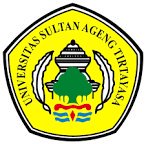Pengendalian Impor Kedelai dalam Upaya Mewujudkan Ketahanan Pangan Nasional di Kabupaten Serang
Abstract
ABSTRACK
Soybean is a unique strategic commodity in the Indonesian farming system and is included in the top three main food commodities in Indonesia besides rice and corn. Apart from being a people's food, soybeans are also the healthiest source of vegetable protein and soybeans are known to be cheap and very affordable in terms of price and quality by most of the Indonesian people. In the period 2015 - 2019 the national soybean production looks worrying because it continues to decline significantly by 37.33% in 2017 from the previous year which also fell 10.75%, so that Indonesia has to import 2,087,986 tons of soybeans to meet 71% domestic demand for soybeans. Agricultural policies for more than 10 years have not been optimal in the development of the agricultural sector, now is the time to change with the development of soybeans widely in the Serang Regency area with planting of approximately 500 hectares spread over 6 location points, namely Pabuaran, Ciomas, Padarincang, Cinangka, Anyer Districts. , and Mancak. The soybean variety currently being planted is the Migo Ratu Serang variety which has been registered with the Ministry of Agriculture of the Republic of Indonesia.
Keywords: Soybean, Import, Policy, Variety
Full Text:
PDFReferences
Antik Suprihanti. 2002. Impor Pangan dan Kebijakan Pertanian. Jurnal Dinamika Sosial Ekonomi. UPN “Veteran” Yogyakarta.
Anonim. 2005. Impor Kedelai. Setiap Tahun mencapai 1,3 Juta ton. http://disperindagjabar.go.id/artmen/publis h/) (2 Maret 2005).
Ginting, E., S.S.Antarlina, dan S. Widowati. 2009. “Varietas unggul kedelai untuk bahan baku industri pangan”.Jurnal Litbang Pertanian 28:79-87.
Nanang. 2012. Buffer stock kedelai diperlukan. www.kppu.go.id/id/kppu- bufferstockkedelai-diperlukan Press Release Resmi Komisi Pengawas Persaingan Usaha. Diakses tanggal 11 Mei 2013.
Supadi. 2009. “Dampak impor kedelai berkelanjutan terhadap ketahanan pangan”. Pusat Analisis sosial Ekonomi dan Kebijakan Pertanian 7:87-102.
Salman, & Rahma, W. M. (2018). Faktor-Faktor yang Mempengaruhi Impor Kedelai Indonesia (Factors Affecting Indonesian Soybean Import). Program Studi Agribisnis Fakultas Pertanian Universitas Islam Riau, 631–637
Singgih, V. A., & Sudirman, I. W. (2014). Pengaruh Produksi , Jumlah Penduduk , PDB Dan Kurs Dollar Terhadap Impor Gula Indonesia. E-Jurnal EP Unud.
Siregar, N. A. (2020). Faktor-Faktor Yang Mempengaruhi Impor Kedelai di Indonesia. Efficient: Indonesian Journal of Development Economics, 1(3), 224–229. https://doi.org/10.15294/efficient.v1i3.2787
Wiranata, Y. S. (2014). Faktor-Faktor Yang Mempengaruhi Impor Gula Pasir di Indonesia Tahun 1980- 2010. 2(1), 1–2. https://doi.org/10.15294/edaj.v3i4.1041
Yunitasari, Y., & Prihtanti, M. (2019). Faktor – Faktor Yang Mempengaruhi Volume Impor Kedelai Di Pulau Jawa. Konser Karya Ilmiah Nasional 2019, 2460–5506, 247–254.
DOI: http://dx.doi.org/10.33512/jat.v16i2.23001
Refbacks
- There are currently no refbacks.
Copyright (c) 2023 yuli yuli, Aliudin Aliudin, Asih Mulyaningsih

This work is licensed under a Creative Commons Attribution-NonCommercial-ShareAlike 4.0 International License.
Editorial Office
Jurnal Agribisnis Terpadu
Jurusan Agribisnis Universitas Sultan Ageng Tirtayasa
Jl. Raya Palka KM. 03 Sindangsari, Kecamatan Pabuaran, Kabupaten Serang,
Provinsi Banten 42163 Telp. (0254) 3204321
Email: [email protected]






